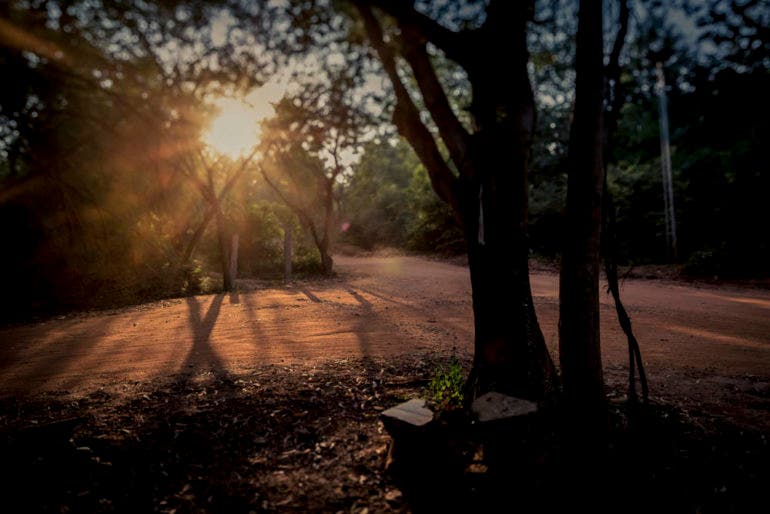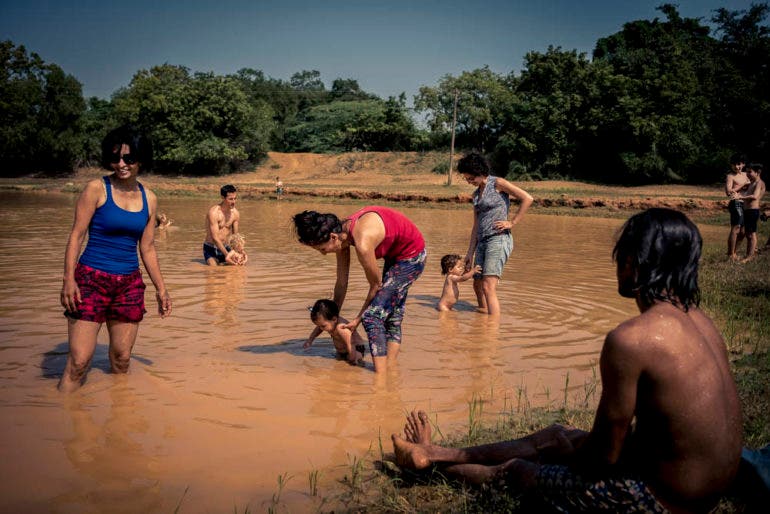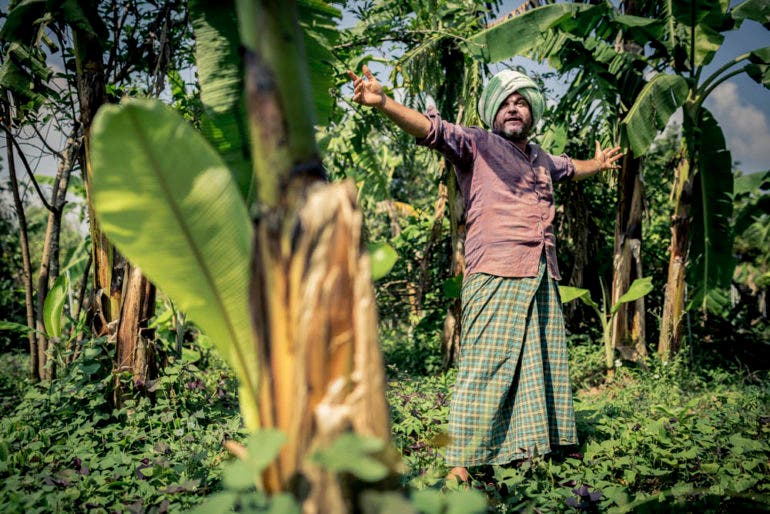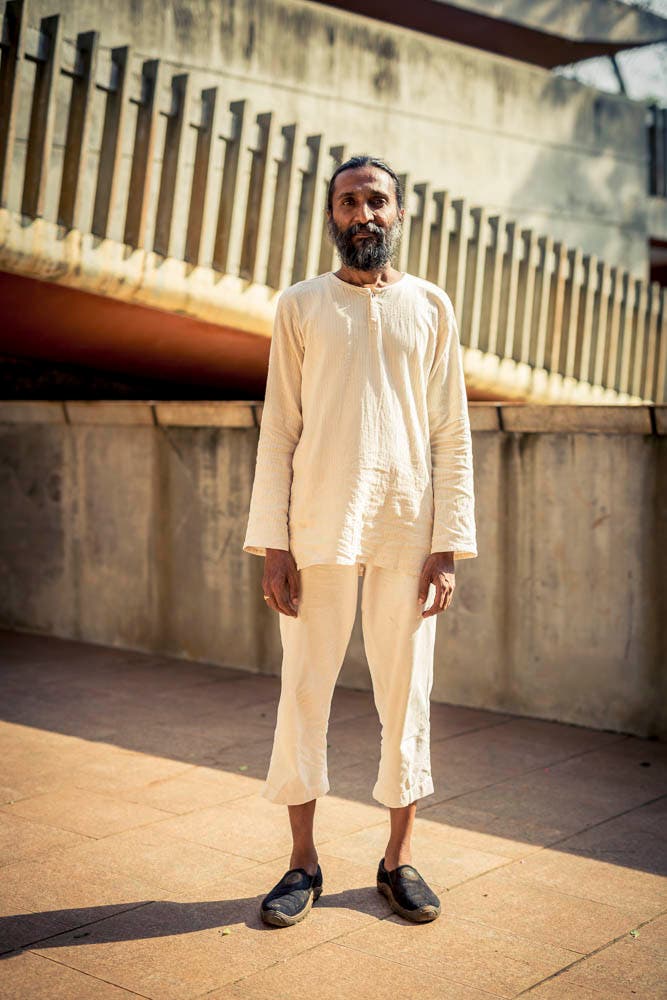Auroville: David Klammer Shares the Truth About a “Utopian City” in India
For more stories like this, subscribe to The Phoblographer.
“Confusion, simple confusion,” writes German photographer David Klammer. He’s referring to his first impressions when he arrived in a land like no other. Auroville, located in the Tamil Nadu state of India, is described as an experimental city. Many outside of Auroville believe it’s a real-world utopia. After 20 years of photographing this interesting, somewhat cryptic city, Klammer shares the reality of his experience.

Why Is Auroville Important?
Auroville was founded in 1968 by a french spiritual guru called Mira Alfassa. The city itself was designed by French architect Roger Anger.
On the motivation for making the city, Alfassa said:
“Auroville wants to be a universal town where men and women of all countries are able to live in peace and progressive harmony, above all creeds, all politics and all nationalities. The purpose of Auroville is to realize human unity.”

At the time of writing, Auroville is home to around 3,000 residents. They come from all over the world to live in a progressive society. It’s a society that uses its own currency (physical tender does not exist). And the city relies on its residents to carry out labor in order to keep it clean and sustainable.
Auroville for Photographers

Naturally, a city such as this is a perfect spot for the curious photographer. Klammer, an editorial photographer, was first sent to this curious location 20 years ago on an assignment for a German GEO magazine. Speaking about the impact Auroville had on him, he told The Phoblographer, “the place somehow never let me go.”
Klammer would continue to return to Auroville. While there, he’d make portraits of the “Aurovilians” and create candid shots of day-to-day life. Two years ago, he released a book titled Good Morning Auroville. Alongside the images, the book includes interviews with the different people who lived in the city.
“Auroville remains one of the greenest, cleanest cities on earth.”

On his relationship with the locals and the freedom he had to shoot, Klammer explains, “As people began to trust me, I could photograph almost everything, only the inner chamber of the Matrimadir is taboo.”
The Matrimadir is the center point of the Auroville community. People go there to meditate and do yoga, and people see the large golden globe as the spiritual heartbeat of the city.

Accessing Auroville
But accessing Auroville isn’t as simple as booking a ticket. For a journalist, gaining access requires jumping over some hurdles. A photographer must first get clearance from Outreach Media, a company that deals with all the press requests for Auroville.

Once accepted into the city, one must then navigate the dense jungle in which Auroville exists. Over the decades, the locals have forested the area in order to make it as green as possible. Doing this has softened the impact the harsh Indian heat has on the inhabitants. Compared to the rest of the country, which is plagued with pollution, Auroville remains one of the greenest, cleanest cities on earth.
David Klammer Explains His Focus
We were curious to understand how Klammer approached photographing such a unique location and its people, who seem even more unique. He told us:
“I wanted to tell a story on different pictorial levels. The outdoors, streets, nature, buildings – the happenings, what is going on in Auroville. And the portraits and thoughts of the people living in Auroville.”

At this point, Klammer begins to share the feelings he had while photographing Auroville and its people. “I felt very embedded,” he continued. “Most people were relaxed with my camera. And as always, I felt great pride and happiness to be included in a society like that, even if it is only for a certain time.”
There’s no denying Auroville is different to most places on earth. And it’s clear the inhabitants want to be an advertisement for a strong community, green living, and a more spiritual existence for all.

We asked Klammer what he learned during his stay: “They [Aurovillians] try to work things out differently, but it does not always work out. People experiment with their lives and are bold to try new things. It seems that, on the one hand, Auroville is a place of constant learning, which I think is good. But on the other side, there are forces that like to keep Auroville in the past. On the environmental side, for example, Auroville really has to catch up.”
Klammer doesn’t go into further detail in regards to what he means about catching up on the environmental side. We did reach out to him for further comment, but unfortunately did not receive a response. But it’s clear, despite the city’s grand reputation, like the rest of the world, it has its issues. And if certain people are holding it back, it would suggest that the community isn’t as connected as it would like the rest of the world to believe.

Multiculturalism

But what about multiculturalism? In the western world, it’s a topic that divides nations. Has the “utopian” city been able to bring together different cultures and make it work?
“That is the most fascinating part of Auroville,” says Klammer. He continues, “so many people there are from so many different cultures and backgrounds. I think what unites them is a similar perspective and conception of life.”

“After all, everybody who wants to become an Aurovilian has to undergo a lengthy process of integration. That’s also good, as the decision to become an Aurovilian means for a lot of people that they have to leave many things behind, jobs, friends and so on.”
Back to Photography
Moving the conversation back to photography, we asked Klammer what his biggest challenges were. “To make appointments with so many people. Everybody is busy there, some have different jobs, like giving yoga-classes in the morning, guiding tourists around in the afternoon and teaching flamenco dancing in the night.”
“Everybody is on the move. So was I. The most rewarding thing when doing interviews was to get so much information and open thoughts.”

He then begins to recall his more enjoyable moments from his 20-year relationship with Auroville. He speaks fondly of driving a Vespa on red dust roads, sometimes seeing mangos and cobras along the way. He remembers the rich, green woods and forest with buildings all around him, looking like what he describes as hobbit houses. In his words, he says, “staying there sometimes felt surreal.”
David Klammer Shares His Verdict on Auroville
So, is Auroville really a utopia like so many believe? It’s clearly not perfect, but it also has some leading examples of how a society can function. In closing, we asked Klammer if the utopian hype was real.
“Aurovilians themselves don’t like their place to be called a Utopia. Of course, it’s a flashy word that is often used, but it describes more our projections of that place. We would love to have some kind of Utopia on Earth. And parts of Auroville are close to that. Many aspects, unfortunately, are not.”
“People living there have a lot of freedom to express themselves. That works well if you are young and healthy. But there are also people in Auroville whom you don’t meet easily. They are depressed and lonely. There is no real social welfare in Auroville, and as people are getting older, more problems will arise. So, I would describe Auroville as an experimental place for the development of humans and society.”
You can see more work from David by visiting his website.
All images by David Klammer. Used with permission.